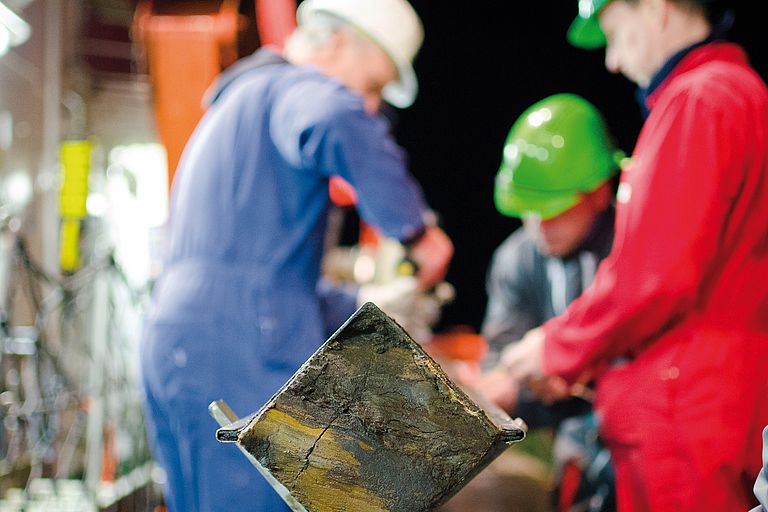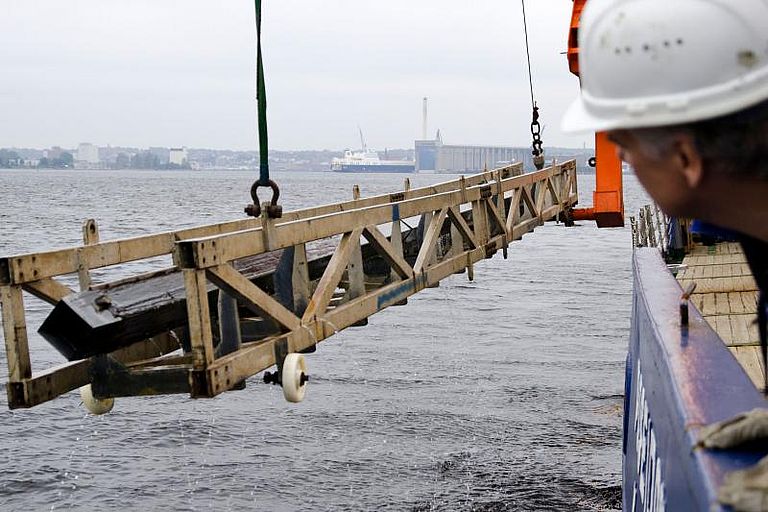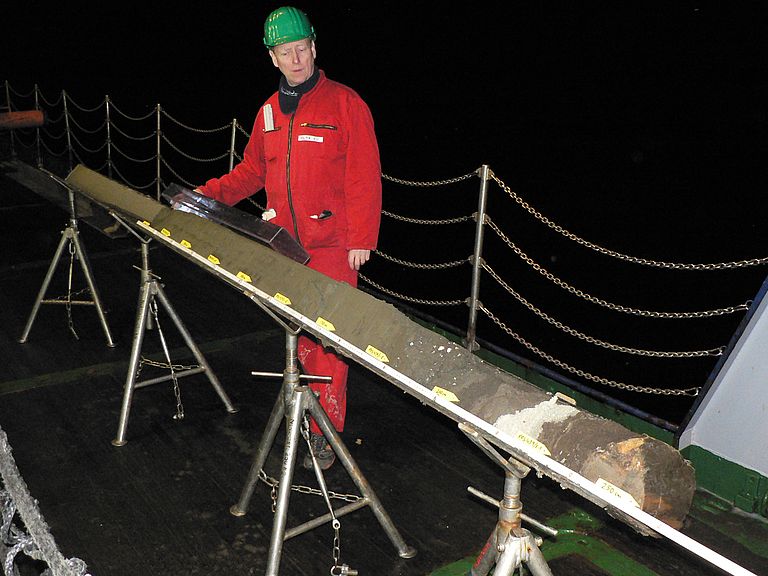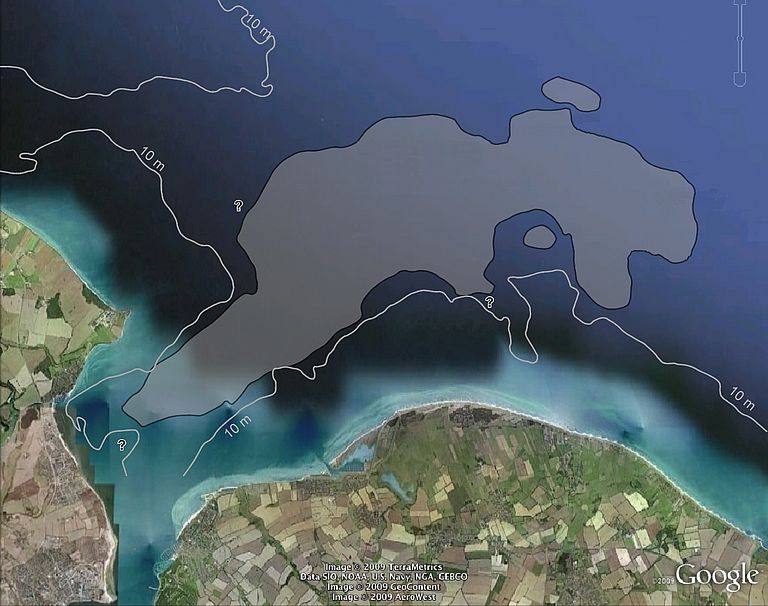Image of the Month: February 2014
Scientists are peparing a sediment core on board the R/V POSEIDON
Time travelling without a time machine?
In order to understand current climate developments and to make better assessments of any future changes, researchers are eager to know more about the past. However, mankind accounts do not reach far enough to sufficiently document a longer climate history. This is why scientists use natural archives. The ocean's seabed is by far the largest environmental archive on Earth. Dead organisms are continuously deposited on the seafloor. Since they incorportated information about the environmental conditions during their lifetime these now dead fossils may also have recorded prominent events, such as rapid global sea level fluctuations. Thus, reading the fossil record allows researchers a deep insight into the Earth's history.
The art of geoscience is to extract thousands or even millions years old information from the seafloor. The first step is to retrieve vertical sediment pieces as long as possible from the ocean floor. For this work the scientists use gravity or box corers. These consist of long steel barrels which are lowered vertically from research vessels into the water. Equipped with an extremely heavy weight on top these devices penetrate deep into the seabed. If everything runs smoothly, the barrels come back on board safe and sound together with the enclosed sediment. Once aboard the researchers then break down the meter-long "cores" into manageable shorter pieces. But be aware! The individual sections must be labeled accurately, described, and packed well for later investigations in the lab – even after decades.
Our picture of the month shows paleo-oceanographers of GEOMAR on the research vessel POSEIDON with a sediment core that was extracted from the mouth of the Kiel Fjord in the Baltic Sea. About 8000 years ago there was a freshwater lake in the sampled area, which was later flooded by invading North Sea water. Clearly visible is this radical environmental change not only through the strong colour changes in the lower section of the sediment core, but also by a piece of wood included at its base (far right on the upper picture on the right). The wood comes from a tree that originally grew on dry land along the shores of the mentioned lake. Today, the remains of the tree trunk lie deeply buried in the seabed of the Baltic Sea.
Read more
- on the GEOMAR expediton webpage






